Apple paste
A recipe from cooking-ez.com November 6th 201997 K3.4
For 1 kg 200 g, you will need:
- 1 500 ml apple juice
- 2 2 tablespoons lemon juice (optional)
- 3 150 g caster sugar
- 4 50 g jam gelling agent
- 5 500 g caster sugar
- Total weight: 1,200 grams
Times:
| Preparation | Resting | Cooking | Start to finish |
|---|---|---|---|
| 30 min. | 10 days | 20 min. | 10 days 50 min. |
Step by step recipe
| 1 | Prepare the tin or mould ready to receive the hot fruit paste by lining it with a sheet of cooking parchment. The mould should have stiff sides and a rectangular tin is ideal, as shown in the photo. | 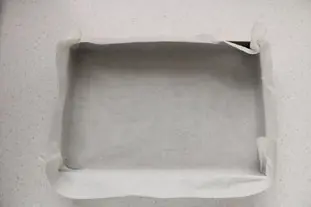 |
| 2 | Press your apples or use a juicer to obtain 500 ml apple juice. You can use a commercially produced apple juice. In this case, add 2 tablespoons lemon juice. | 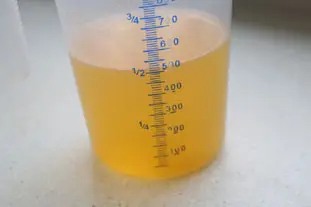 |
| 3 | Mix 150 g caster sugar and 50 g jam gelling agent with a whisk. | 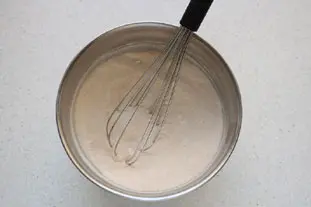 |
| 4 | Pour the apple juice into a saucepan with the sugar and gelling agent mixture. | 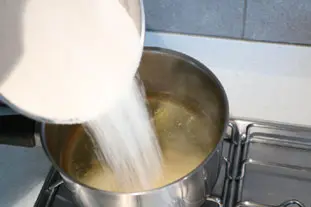 |
| 5 | Bring to the boil... | 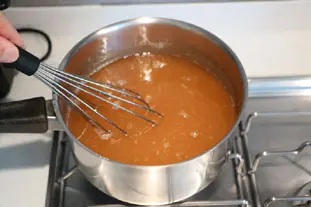 |
| 6 | ...stirring constantly. Note: If using freshly pressed apple juice, you might need to skim off the foam which may form on the surface. |  |
| 7 | When the mixture boils, add 500 g caster sugar, mix in well and bring back up to the boil. Leave to boil for 3 minutes. | 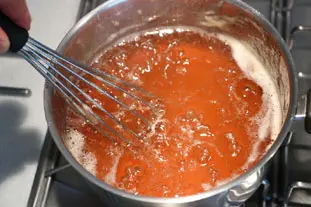 |
| 8 | Pour the liquid into the prepared tin. Leave to cool at room temperature for about 2 hours, then a further 2 hours in the fridge (or overnight). | 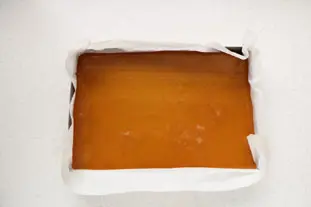 |
| 9 | Turn the fruit paste out of the tin, then dry the top and sides with absorbant paper. | 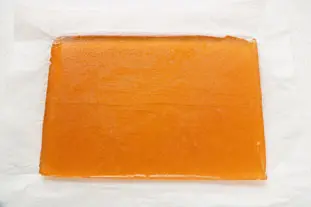 |
| 10 | Use a large knife to cut the block into strips, then across to give small pieces about 0.5 x 1 inch (1 x 2 cm). | 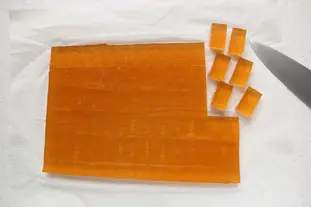 |
| 11 | It is not essential, but for a more attractive finish, roll the pieces of fruit paste in granulated sugar. | 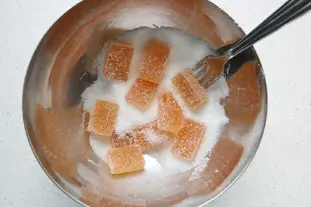 |
| 12 | Keep your finished fruit paste in an airtight container in a cool place. | 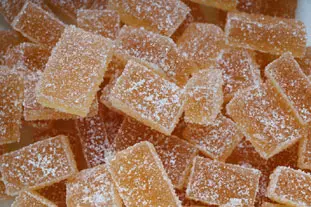 |
Remarks
You can use other gelling agents in place of the pectin, such as gelatin or agar-agar, but the texture will be different: a little softer with gelatin, a little more brittle with agar-agar.For a real taste of Normandy, add a little Calvados to your fruit juice. It is important that your fruit paste tastes of apples rather than just sugar, so do try to keep to the proportions of juice to sugar. Don't add any more sugar, though you can reduce it, if you like, as low as 50/50.
View this recipe : https://cooking-ez.com/desserts/recipe-apple-paste.php
December 14th 2025.
